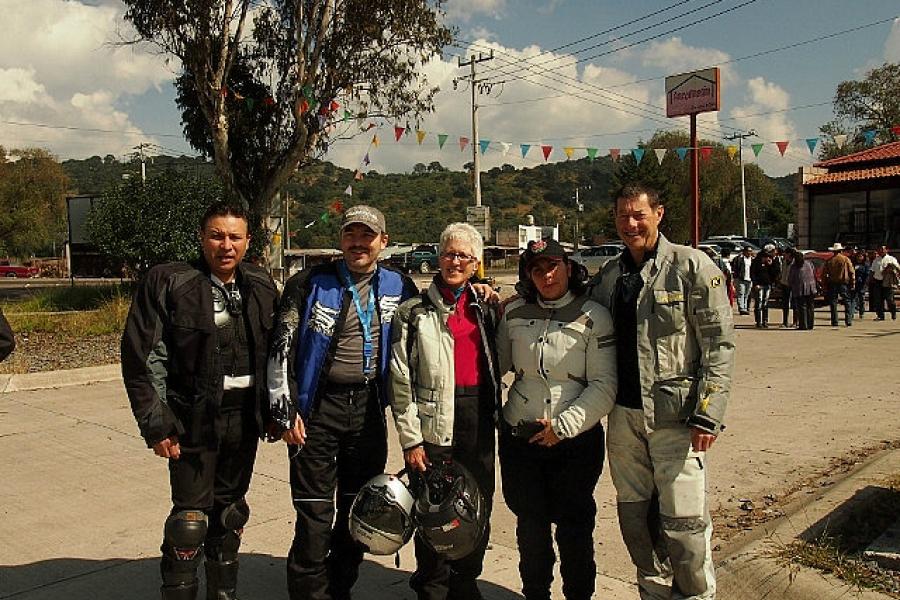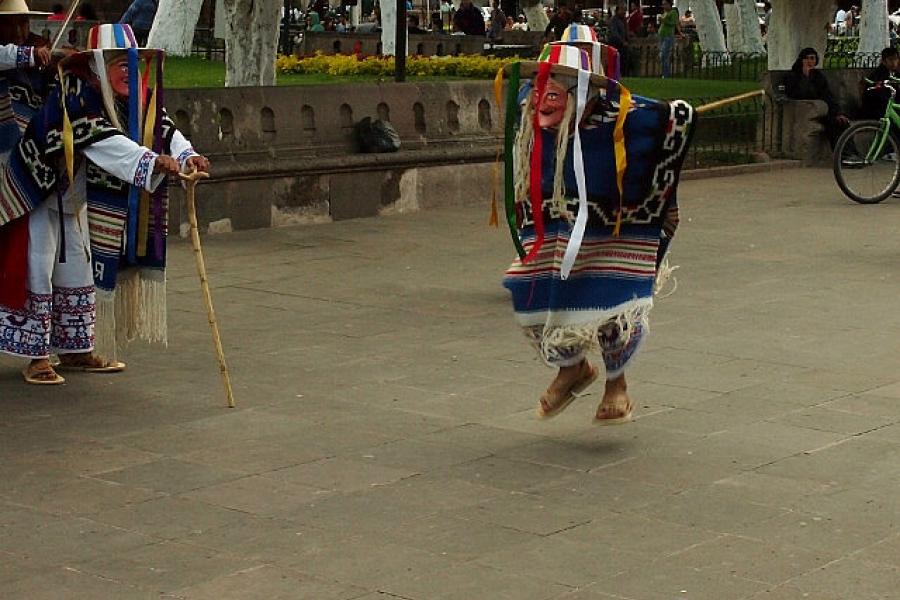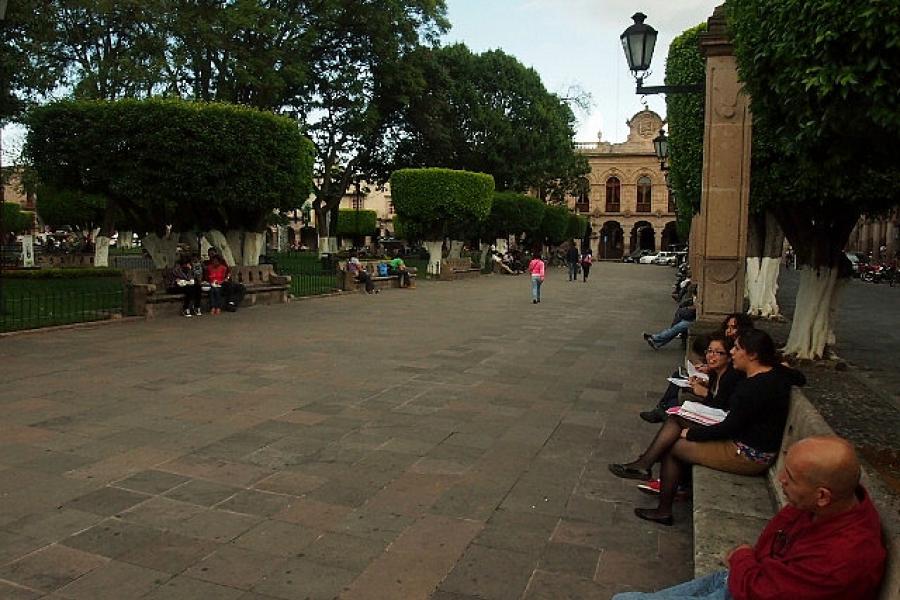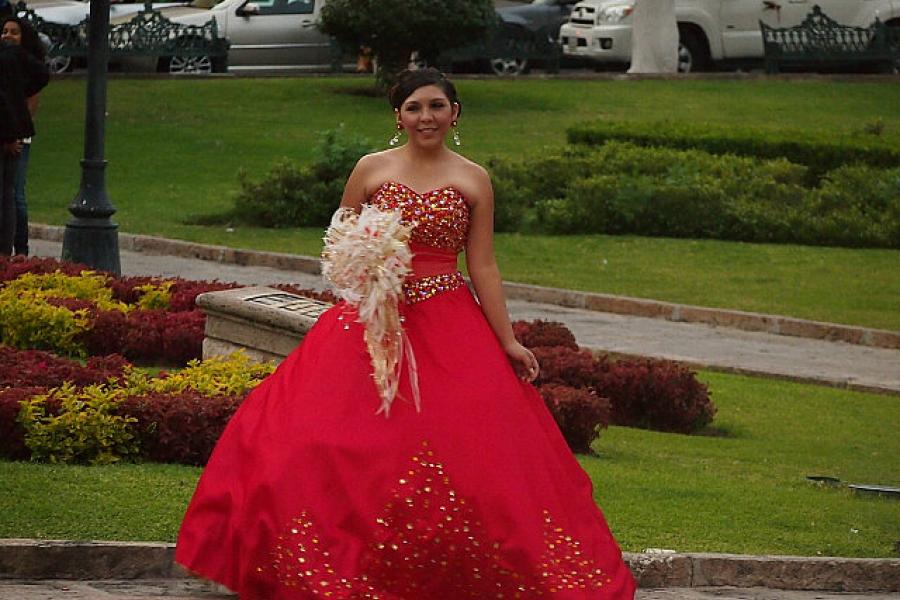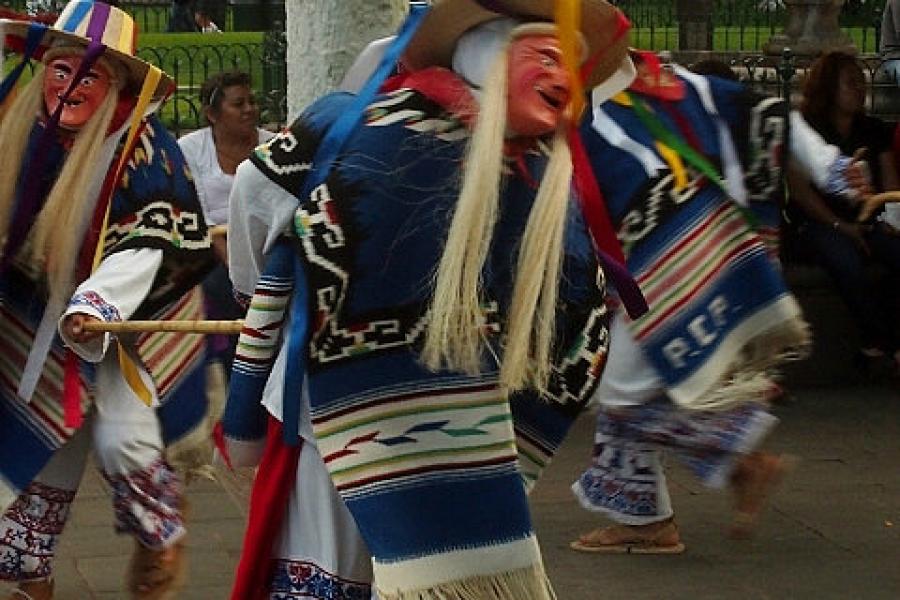A Beautiful Town and New Friends (Originally posted 30 Nov 2013
Country
By the time we arrived in Morelia, our ideas about Mexico, if we had any at all, had largely been dismantled and were ready for a rebuild. There may have been no better place for that to happen than this stunningly beautiful town of 130,000 laid out in a grid pattern in the 16th Century. Morelia, of course, has a huge cathedral (every Mexican city worth its salt has at least one of those) but it also has a vast stock of beautiful and substantial buildings, extensive well maintained parks and well used public plazas. Morelia's population is augmented by about 20,000 students attending its university and music school (the oldest in the Americas) and the place has that attractive openness of student towns everywhere. Hidden down every street are smart little coffee shops, bars and cheap-eats places that give the place a sophisticated feel. By the time we had been there six hours, we had attended a wedding at the Cathedral, applauded buskers performing the Dance of the Old Men, consumed a cheap but excellent meal, watched a concert in a side street and a fireworks display from the balcony of our hotel. We ended our day having a few beers in a bar full of young people in the uniform of skin-tight jeans and experimental facial hair that mark out uni-students everywhere. A day later, as we walked back to our hotel, enjoying the mild evening and licking our ice creams, we decided that Morelia was our sort of town. The sort of place where you could make yourself comfortable if you happened to wash up there sometime.
Our departure from Morelia was a little delayed when I couldn't get Elephant out of the secure lock-up where it was stored near to the hotel. The delay was just another example of the good luck that comes to those who don't overplan. A few kilometres out of town we were overtaken by a small herd of bikes out for a Sunday ride. There were plenty of BMWs, some with a luggage fit but all travelling light. One rider pulled us over to the side of the road, introduced himself and invited us to breakfast with the ride group. We rode along with the group for a further 30 minutes up into the nearby hills to a family restaurant in a smallish town and parked Elephant at the end of a long row of bikes. A few of the group spoke excellent English which made up for our disgracefully poor Spanish (a failing which we promised to remedy) and we enjoyed the kind of easy social exchange that riders everywhere enjoy. There is something about bikes that cuts through language and cultural barriers.
After the meal, the discussion turned to our route forward. We were easily convinced we were heading the wrong way around Mexico City and without giving it any great thought, switched to another road. A small detachment of riders accompanied us to the next major town where we refuelled and said farewell. We sprinted off into the mountains (as much as Elephant can sprint) and had no trouble navigating our way south. The road varied between some of the best sweepers we have ridden to a mindless grind through small valley towns with endless speed-bumps (called topes). It did however, provide one more first for the team. Crossing out of the central valley we climbed up through a pass at 3154m. To put this in perspective, this is higher than any pass we rode in the European Alps. In fact, it is higher than any paved pass in the European Alps!
We found a good overnight stop in Cuernaca then pressed on towards the city of Oaxaca the next morning. It was a long haul but, by late afternoon, we were confident we would be safely off the streets before last light. I always get worried when things are going so well and there is good reason for that. We had picked up the tollway about 40 km out of town and were making a very respectable Elephant speed of about 120km/h when suddenly we closed on a massive traffic jam. The big trucks filled the road as far forward as we could see. There were no exits. I stopped Elephant behind the last truck. Bus passengers just ahead were taking their bags and abandoning the scene on foot. I looked back up the freeway and more trucks and cars where arriving every minute.
This was no place for Team Elephant to get stuck and we clearly didn't have much time to make a decision. I spun Elephant around as quickly as I could, switched on the emergency flashers and sped back up the road against the oncoming traffic. A few kilometres back we found a place where the bank down from the tollway was OK for elephants. We turned off and rode 10m down a steep slope, paid a farmer 10 Pesos to ride over his field then bumped and crashed our way to the nearest track. From there it was easy to get into a nearby village where we promptly got lost in a maze of unpaved, rutted, gnarled lanes that had been blocked at regular intervals by new constructions, ditches and even, in one case, a soccer goal. It took us 40 punishing minutes to get back onto a main road and a further 40 minutes to struggle through the evening traffic to the centre of town. By the time we had found accommodation, safe parking for Elephant, food and beer we were exhausted but very happy we weren't still trapped in a 5km traffic jam back on the tollway.







